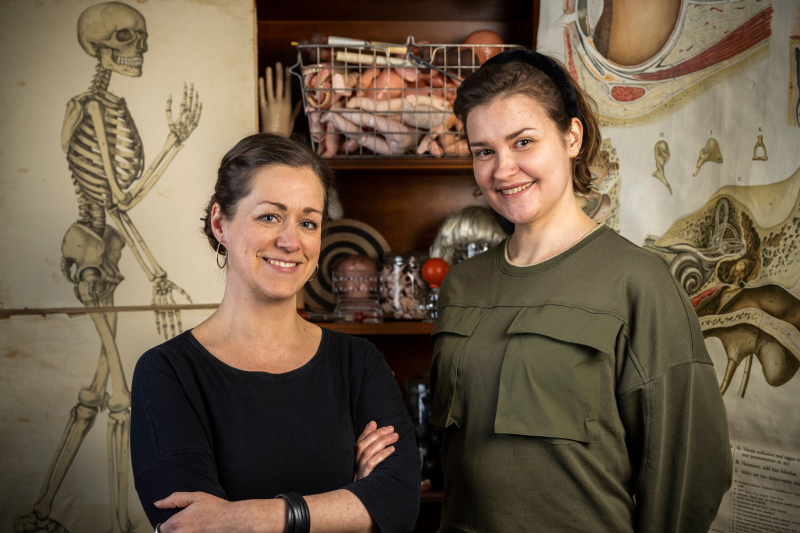Malin Klingenberg and Maria Sann

Rationale
Teo goes to a party dressed as a rabbit. It’s so much fun until something terrible happens. Inside the dark toilet, he meets a laughing skeleton that frightens him so much that he falls and hits himself. In the hospital, his broken arm is x-rayed and put in plaster. At this point, Teo realizes that there’s a skeleton inside him, too. How’s that possible? Does this skeleton also want to scare him?
Malin Klingenberg’s and Maria Sann’s picture book Skelettet (“The Skeleton”, not translated into English) is told from a supportive and sympathetic child’s perspective throughout. Teo struggles with understanding the skeleton as both reality and metaphor, as something that exists both outside and within himself. Based on his own imagination and in play, he tackles the existential questions these skeletons raise. The theme and the drama are firmly anchored in Teo’s view of life, and thus portray a child’s ability to understand and create meaning in life in their own way: “I wonder if my skeleton likes being in my body? I wonder if my skeleton also gets sweaty when I run? I wonder if my skeleton dreams of being able to scare people at an amusement park? I wonder if my skeleton will miss me when I die?”
Klingenberg’s concise text and dynamic dialogue are surrounded by Sann’s thoughtful imagery. On the effectively blackened cover, Teo stands eye to eye with a grinning (or friendly smiling?) skeleton which is covered in phosphorescent paint and so glows in the dark. Darkness returns in the form of well-judged spreads where dark and light combine to create a fascinating X-ray effect, such as when Teo’s mother holds up her hand against the bedside lamp to show him that she also has a skeleton inside her. Sann seamlessly makes a picture book from the story by surprising readers with varied spreads, unexpected perspectives, and responsiveness to how the sensitive boy protagonist is portrayed.
Skelettet is a seemingly simple picture book with the ability to evolve with repeated reading. Klingenberg and Sann handle the story’s existential themes with finesse. In a touching and child-friendly way, seriousness is interspersed with warm and playful comedy. As the cover of the picture book shows, we all carry a potential “monster” within us. Or at least a skeleton of our own that we can embrace and become friends with.
Malin Klingenberg (born in 1979) is a Finnish-Swedish author. Since her children’s book debut in 2010, she has mainly published books for children in their in-between years, as well as picture books in collaboration with various illustrators. Her books have been translated into Finnish, Danish, English, Estonian, Bulgarian, German, Spanish, Czech, Italian, Chinese, and Korean among others. Klingenberg was awarded the Runeberg Junior prize in 2017.
Maria Sann (born in 1982) is a Finnish illustrator who, since her debut in 2019, has illustrated a handful of children’s books and picture books. In 2021, she was awarded the Rudolf Koivu prize for the picture book Bokstavsvärldar (with text by Henrika Andersson). Skelettet (2022) is Klingenberg’s and Sann’s second picture book collaboration.